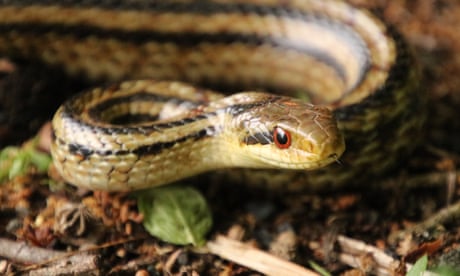Manitoba
Long-lost John Lennon interviews from Winnipeg-born journalist go up for auction
Ken Zeilig’s tapes, spanning 91 minutes with Lennon and Yoko Ono, could fetch nearly $53K
Caitlyn Gowriluk · CBC News · Posted: Sep 27, 2021
Ken Zeilig worked as a freelance journalist for decades before his death in 1990. He's pictured here in his studio in the 1980s. (Submitted by Leo Zeilig)
Growing up, Leo Zeilig had always known the story of how his dad once snagged a series of interviews with John Lennon and Yoko Ono in the late 1960s.
But it wasn't until recently, while stuck at home during pandemic lockdowns last year, that his sister stumbled across a box tucked away in her Los Angeles basement and they finally discovered what had become of those recordings from their late father, Winnipeg-born freelance journalist Ken Zeilig.
Inside the box were 12 reel-to-reel tapes holding three interviews — 91 minutes — of unaired audio of the iconic couple.
"They were the tapes of the interview of legend," Leo recounted from London.
"This incredible archive, this treasure trove of interviews, was just gathering dust."
The family was able to make digital copies of the recordings to hold on to for sentimental reasons, Leo said.
But the tapes themselves are now set to go to auction this week, where they're expected to fetch between $34,000 and nearly $53,000 CAD, U.K.-based auction house Omega Auctions says on its website.
Martin Zeilig holds up photos of his late brother, Ken Zeilig, whose long-lost interview tapes of John Lennon and Yoko Ono are going up for auction this week.
(Karen Pauls/CBC)
"This publicity that we're getting for the tapes feels like a real honouring of my father and his work — his extraordinary work and legacy," Leo said.
Ken's younger brother, Martin Zeilig, said he thinks his brother would be relieved to know that someone finally discovered his tapes.
"My hunch is that he would say, 'Finally. Finally, these tapes are going to be heard,'" Martin said in an interview in Winnipeg.
From Winnipeg to the Wedding Album
Martin said his brother was "fiercely proud" of his roots in the Manitoba city, where he grew up in the North End and became a teacher before moving to London and studying journalism and filmmaking.
Ken's work took him across Canada and the world over a span of several decades, including jobs at CBC, Martin said. He died of cancer in Winnipeg in 1990.
Martin said he's glad the unaired tapes are finally going to be shared, and that people will know "it was a journalist who was originally from Winnipeg who did these amazing interviews."
One of the reel-to-reel tapes up for auction is pictured. (Omega Auctions)
Leo said getting to listen to the tapes more than 30 years after his father's death was surreal.
In one of the interviews, he said, his father told the couple how much their Wedding Album, which had just come out, meant to him and his wife at the time — Leo's mother.
"There's this wonderful meeting of the three of them at that point in the interview when they're all expressing their feelings about love and sharing a life of being together," he said.
"And, of course, to hear it about your parents in an interview with John Lennon and Yoko Ono is extraordinary."
A 'tenacious' journalist
Ken's family says they're not sure why only a few minutes of audio from the tapes was ever aired anywhere.
They also don't know exactly how the journalist was able to lock down not just one, but three interviews with the famous duo at their home in 1969 and 1970 — right before The Beatles broke up.
Why the Beatles remain relevant 50 years after breaking up
But knowing Ken, they're not surprised, either.
"My father was exceptionally tenacious, so if he wanted an interview, [he'd] get it. And he would use all his contacts to get it," Leo said.
\Musician John Lennon and artist Yoko Ono perform in their first public appearance as the Plastic Ono Band at Toronto's Varsity Stadium in September 1969.
(The Associated Press)
It's how Martin remembers his brother, too.
"He had those qualities to make people want to talk to him. He was charming. He was very forceful, but not in a sort of hostile way. And he was interested. He was very interested in people," Martin said.
"He had this capacity to draw things out of people that they might not otherwise say to anyone else."
More auctions possible
Ken's family says they're interested to see who goes home with the tapes after they're auctioned off.
And with the money from the impending sale, Leo said he hopes they'll be able to digitize and auction off the originals of more of his father's "astonishing" back catalogue of recently discovered interviews.
Handwritten lyrics for Beatles' song Hey Jude sell for $910K at auction
When the world learned that John Lennon was gone
"Every major cultural, political figure of the 1960s, '70s and '80s, my father interviewed," he said.
"It's incredibly rich, from Alfred Hitchcock to Audrey Hepburn."
Ken Zeilig's interviews with John Lennon and Yoko Ono will be auctioned on Tuesday.
The tapes of some long-forgotten interviews with John Lennon and Yoko Ono done by a Canadian journalist are going up for auction in the U.K. The 91 minutes of audio recording could fetch more than $50,000. 2:32
Issued on: 28/09/2021

Copenhagen (AFP)
A 1970 tape of John Lennon singing a hitherto unheard song called "Radio Peace" and expressing frustration at his Beatles image to a group of Danish schoolboys goes under the hammer on Tuesday in Copenhagen.
The 33-minute tape was recorded on January 5, 1970 when the former Beatle spent winter in a remote corner of Jutland in western Denmark with his wife Yoko Ono.
Back then four eager boys, writing for their high school newspaper, braved a snowstorm in the hope of interviewing their idol.
They clinched the interview. The topics ranged from the couple's peace campaign, the Beatles, Lennon's hair and his frustration with his image as part of the "Fab Four".
Lennon and Ono were famous for staging lie-ins and singing songs of peace as the Vietnam War raged.
"We went into the living room and saw John and Yoko sitting on the sofa, it was fantastic. We sat down with them and were quite close to each other," Karsten Hojen, one of the tape's owners, told AFP.

"I was sitting next to Yoko Ono and John Lennon was sitting next to Yoko and we talked, we had a good time," said Hojen, who is now 68.
Lennon and his wife arrived in Denmark in December 1969 to sort out the future of Ono's five-year-old daughter Kyoko, who was living with her father in northern Jutland.
By then, the Beatles had recorded their last album, Abbey Road, and even though it was not official, the group had parted ways.
- For a museum or Yoko? -
Although Lennon and Ono spent their first week in Denmark incognito, the press found out and the singer organised a news conference that coincided with the first day of the school term.
Hojen and his friends convinced the headmaster to let them skip class to talk peace and music with the singer, a few months before the Beatles officially disbanded.

Hojen and his friends said they decided to part with the audio cassette because they could not imagine sharing it among their numerous children.
"We would be happy if a museum was interested, or why not Yoko Ono herself?" the cultural consultant said.
The recording is of decent quality.
"You have to sit back and take some time to listen to it and hope for the best," said Alexa Bruun Rasmussen, director of branding at Bruun Rasmussen Auction House which is handling the sale.
"They actually play 'Give Peace a Chance', but with different words," she said.
The recording also includes the unreleased song "Radio Peace", and is "heartfelt" and "unique", Bruun Rasmussen said, adding that the tape and photos could fetch up to 40,000 euros ($46,000).
"John Lennon is talking to young schoolboys, they share the passion of the peace message. And it comes across clearly that there's a connection between them," she said.

Although Hojen has recounted that winter day in detail to his children and grandchildren, he will no longer have any trace of it after the sale as the owners have not digitised the recording.
© 2021 AFP
1970s unpublished John Lennon recording to be auction in Denmark

- An unpublished 1970 audio recording of John Lennon will go under the hammer in Copenhagen on 28 September.
- The recording was taken by four men who were teenagers when they met The Beatles' singer, who was spending part of the 1969-1970 winter in a small town on Denmark's west coast.
- The asking price for the 33-minute recording has been estimated at between 27 000 and 40 000 euros (R450 000 - R670 000).
A 1970 audio recording of John Lennon singing a hitherto unpublished song during a visit to Denmark will go under the hammer in Copenhagen on 28 September, the auction house said Tuesday.
The asking price for the 33-minute recording has been estimated at between 27 000 and 40 000 euros (R450 000 - R670 000).
It has been put up for sale by four men who were teenagers when they met The Beatles' singer, who was spending part of the 1969-1970 winter in a small town on Denmark's west coast.
"The tape is totally unique because it's a conversation. It took place after a press conference with the four schoolboys and some journalists, and John Lennon plays a few songs for them," Alexa Bruun Rasmussen of the Bruun Rasmussen auction house told AFP.
"One of them, Radio Peace, has never been published," she said.
"It's a little piece of Danish history and when we listen to it, we can sense that John Lennon felt cosy in Denmark. He could be left alone and just be," she said.
At the end of December 1969, Lennon visited Denmark with Yoko Ono to spend time with Ono's daughter from another relationship, Kyoko, who was living with her father in northern Jutland at the time.
The visit, which lasted several weeks, went largely unnoticed at first. But once his presence was discovered, the star called a press conference.
Due to a series of unforeseeable events and bad weather, the four high school students ended up interviewing Lennon after the press conference, in an informal setting.
"I believe they were experiencing 'hygge'," the currently on-trend Danish art de vivre of making everyday life cosy and convivial, joked Bruun Rasmussen.
During the interview, conducted just months before The Beatles broke up, the teens were mainly interested in Lennon's peace activism.
"With the auction, they want to pass on the message John Lennon stood for," Bruun Rasmussen said.
She noted the "old-fashioned" charm of the recording, which is being sold with photos of the meeting and the issue of the school newspaper featuring the interview.
"To listen to the 33 minutes of the tape you need an old-fashioned cassette player and I guess that nostalgia part will add to its value."
Lennon was shot dead by an apparently delusional gunman, Mark David Chapman, who had earlier asked for an autograph, in New York in 1980.



 '
'












